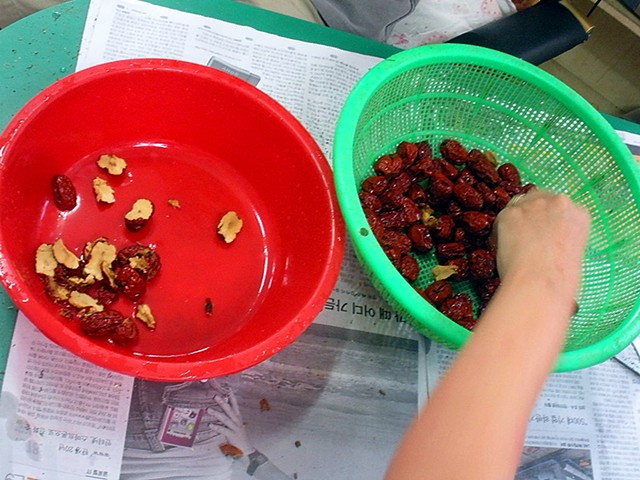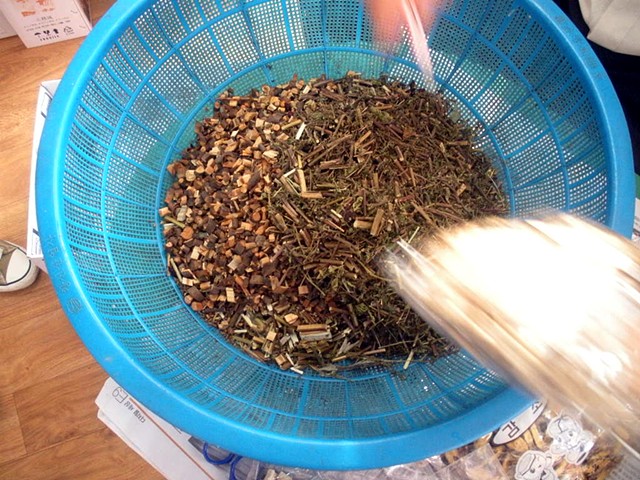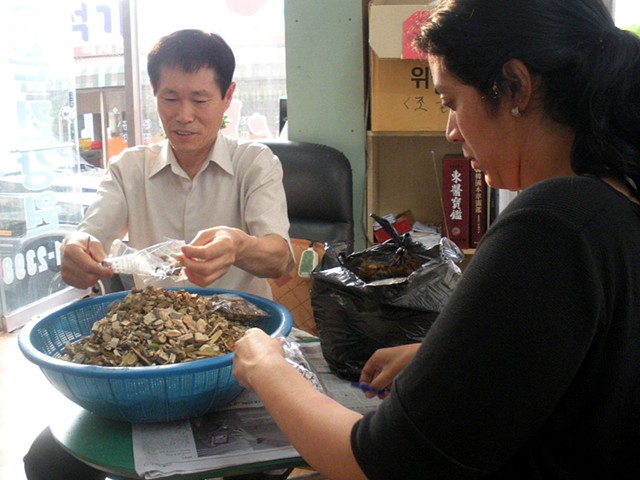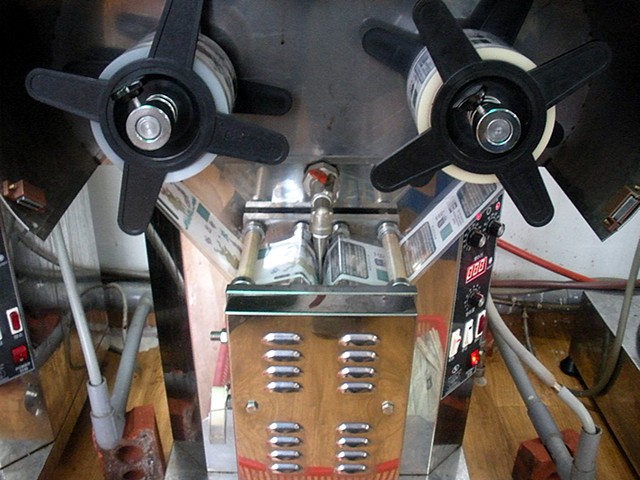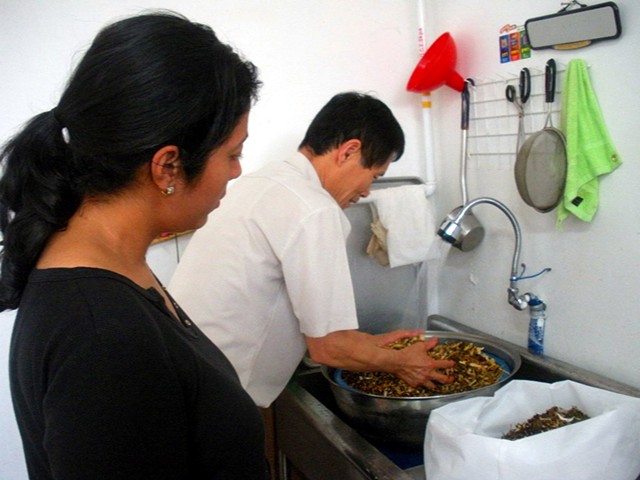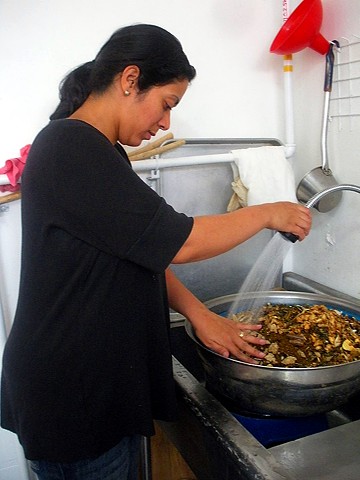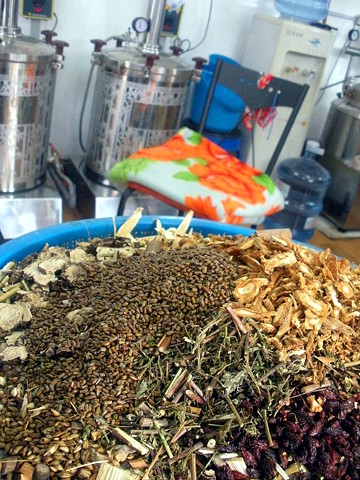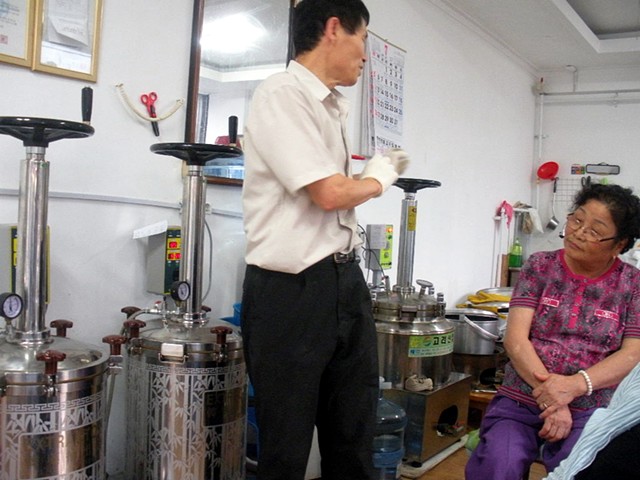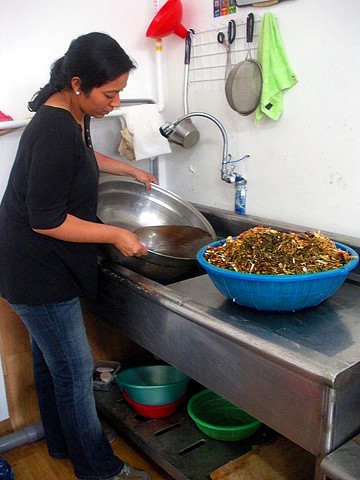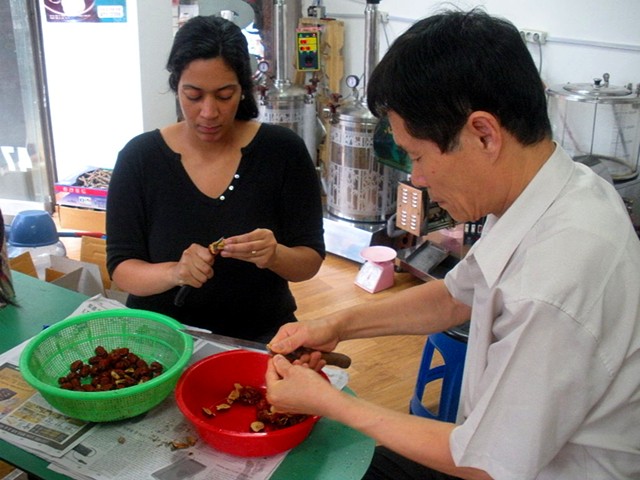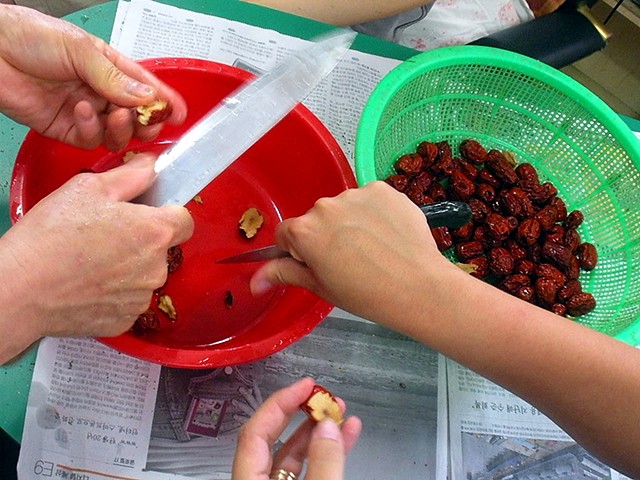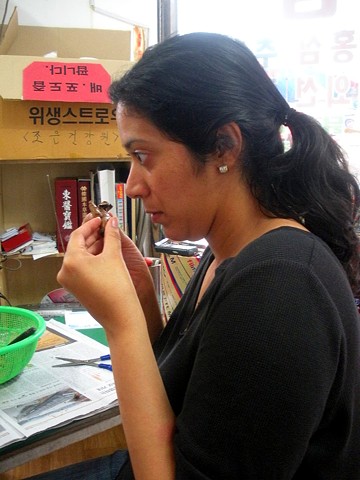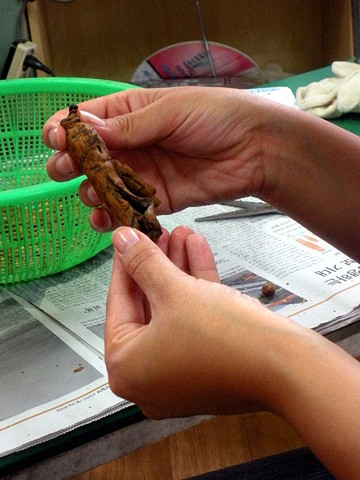Medicine Exposed
This intervention unfolded unexpectedly when I received a phone call from the owner of a traditional medicine shop, where I had previously inquired about learning how to make one of his medicinal products. A few weeks earlier, he had agreed to teach me only because I was a foreigner—he made it clear that he would never share his formulas with Koreans, as these businesses are fiercely competitive and the recipes for these medicines are often stolen. When the call came, I was invited to observe the process of creating one of these infusions, which was a rare and intimate opportunity.
The process itself was exacting, stripped of any romanticism. Modern technology had long replaced the traditional ceramic pots used for boiling the various ingredients, such as thirty-six different types of bark, seeds, flowers, and fruits. Instead, industrial-sized pressure cookers were employed, dramatically speeding up the infusion process. The long hours of preparation, once performed by hand, had been replaced by technology, reflecting a shift in both the practice of traditional medicine and in the generational attitudes toward it. Younger generations, in particular, were increasingly uninterested in these infusions, preferring modern methods of treatment and viewing the traditional remedies as little more than placebos rather than actual cures.
During the process, I was joined by a Korean artist, Sungsoo Kim, who was photographing and documenting the ritual. As we observed the infusions being made, Sungsoo began to recall childhood memories of his grandparents preparing similar medicines at home. The sweet, comforting aroma of the boiling brews seemed to trigger a sense of nostalgia in him, evoking a connection to a past that was slipping away. While we waited for the infusions to finish, an older woman in the shop shared her experience of these traditional medicines. She told us that, years ago, such remedies were available only to the wealthy, and that she had only recently begun drinking them. Her children paid for her monthly supply now, a sign of care and concern in a rapidly changing world.
